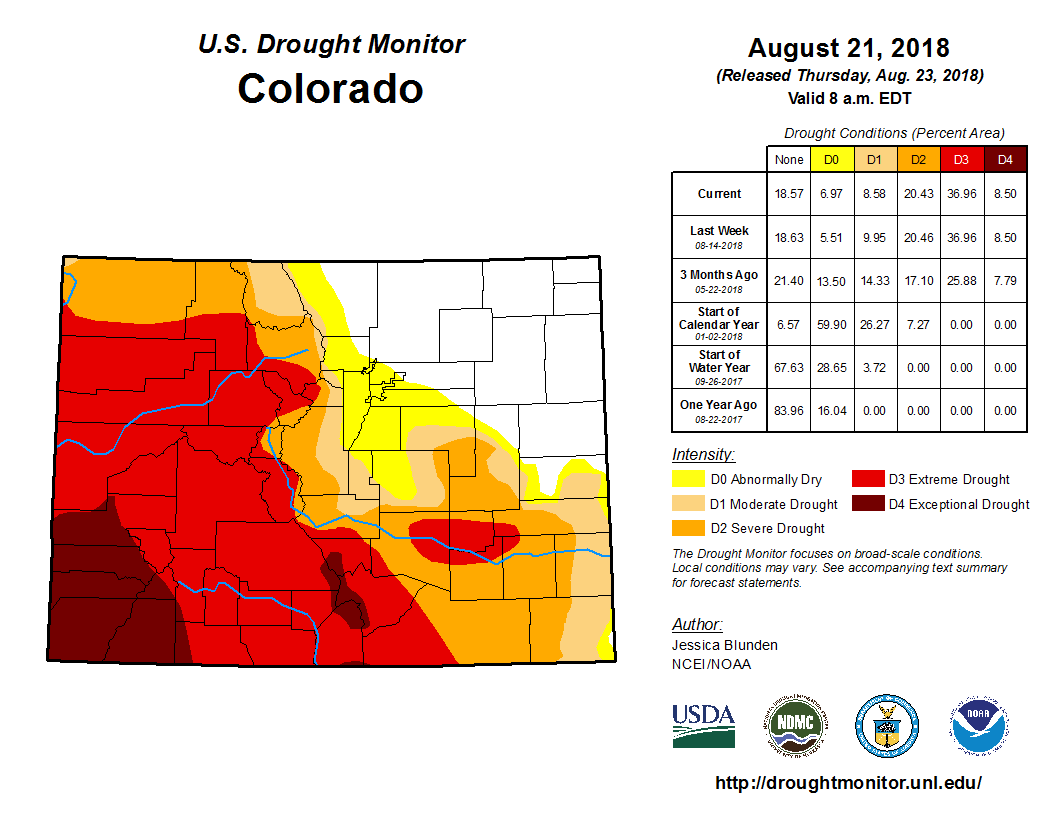

Colorado's drought monitor shows some improvement in central Colorado this week, but the western side of the state still needs moisture.
Douglas, Teller and El Paso counties saw the largest increase in moisture around the state. The U.S. Drought Monitor reports those counties received between one and four inches of rain in the last couple weeks. The additional precipitation brings some areas in those counties from “moderate drought” to just "abnormally dry."
However, about 65 percent of the state was still under “severe drought” or worse. Last year at this time, 83 percent of the state was in no sort of drought monitoring at all. Most of the drought is growing in the north and west along the Western Slope.
Janie VanWinkle, a rancher in Mesa County, told Colorado Matters the drought is the worst she's seen in 40 years.
“As you step across the grass it just crinkles and crushes. Normally it would lean over and it just crushes simply into very fine particles," she said.
Some of the ranchers are selling their calves two months early. But the calves are about half of what they normally weigh. That has a big impact because ranchers make money by the pound.
VanWinkle said the ranchers she spoke with are asking themselves one main question: "What are we going to do?” VanWinkle helped organize workshops so Colorado farmers and ranchers can find ways to deal with ongoing drought conditions.
“Sometimes it's really helpful to know there are others in your situation. It's not your fault, it's not something you can control, and we just have to get through this,” she said.
In May, extreme drought only went as far north as Pitkin County. It now spreads clear up to the southern portion of Moffat County, the drought monitor shows.
The four corners region — Montrose, San Miguel, Dolores, Montezuma, La Plata, Hinsdale, San Juan, and Archuleta counties — are under the most extreme classification of drought. Parts of Custer, Saguache, Alamosa, Costilla, and Huerfano counties are also in that category.
Grand Junction implemented mandatory water restrictions on Tuesday. Aspen also declared water restrictions for the first time in its history. And Yampa River fish are stressed and in hot water.
Despite drought growing to the north and west, it has dissipated a little in southeast Colorado. The drought monitor forecasts up to 2 inches of rain to begin Tuesday in western Colorado.
More On Drought In Colorado:







